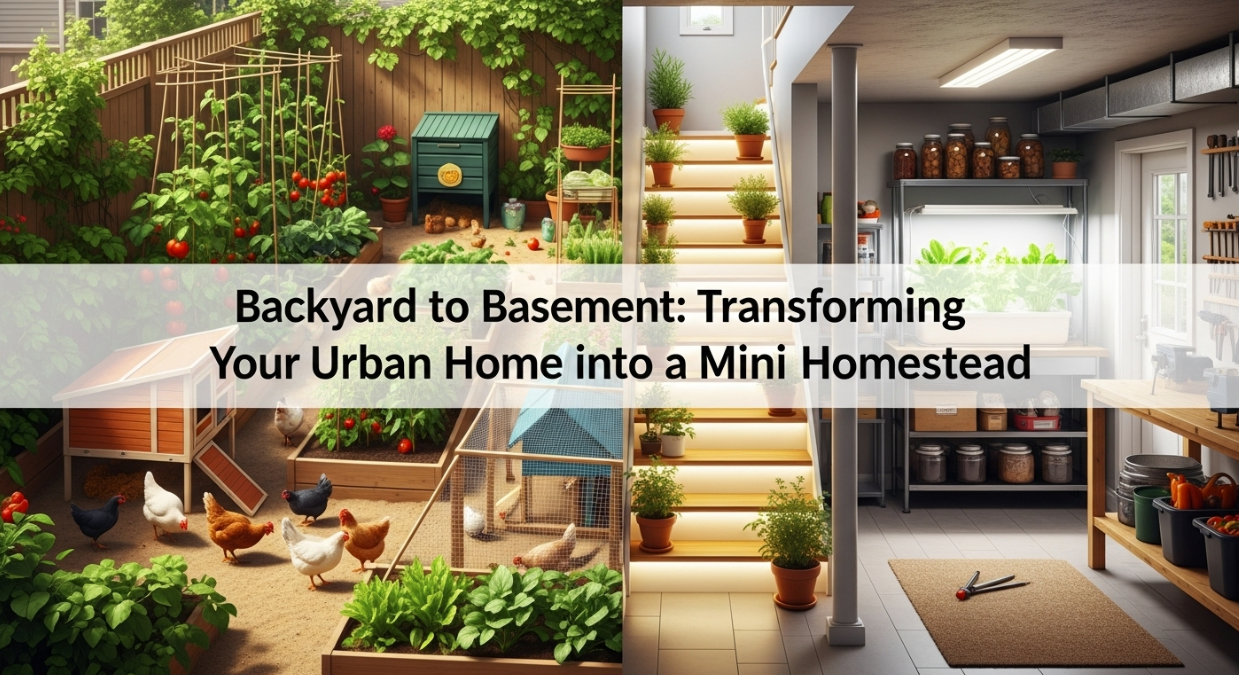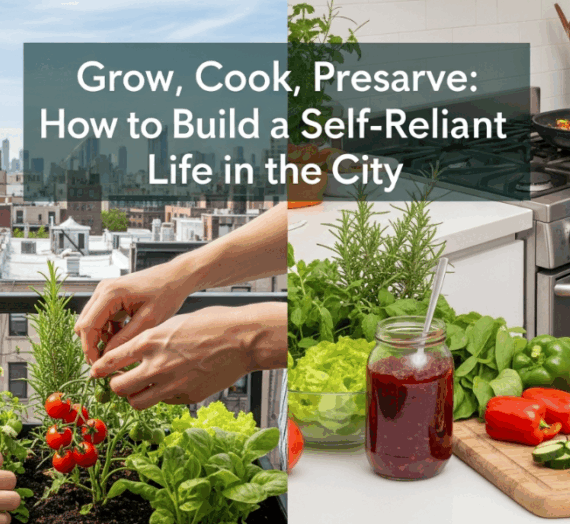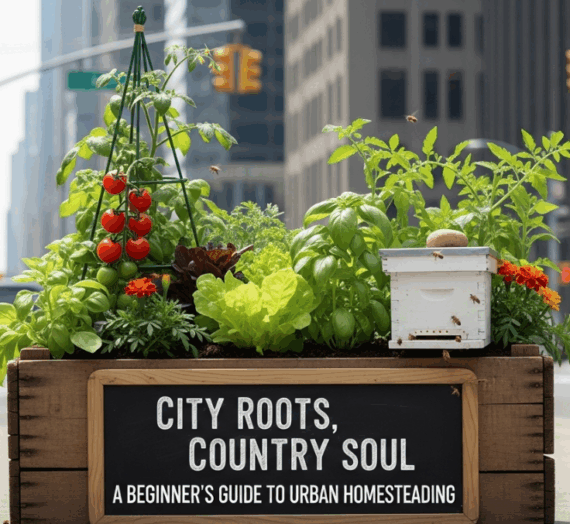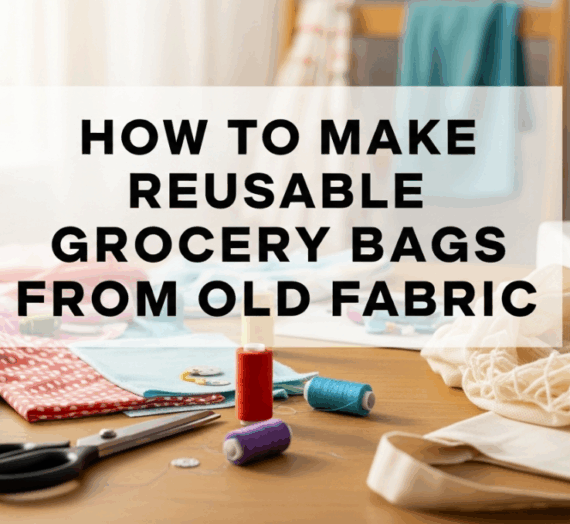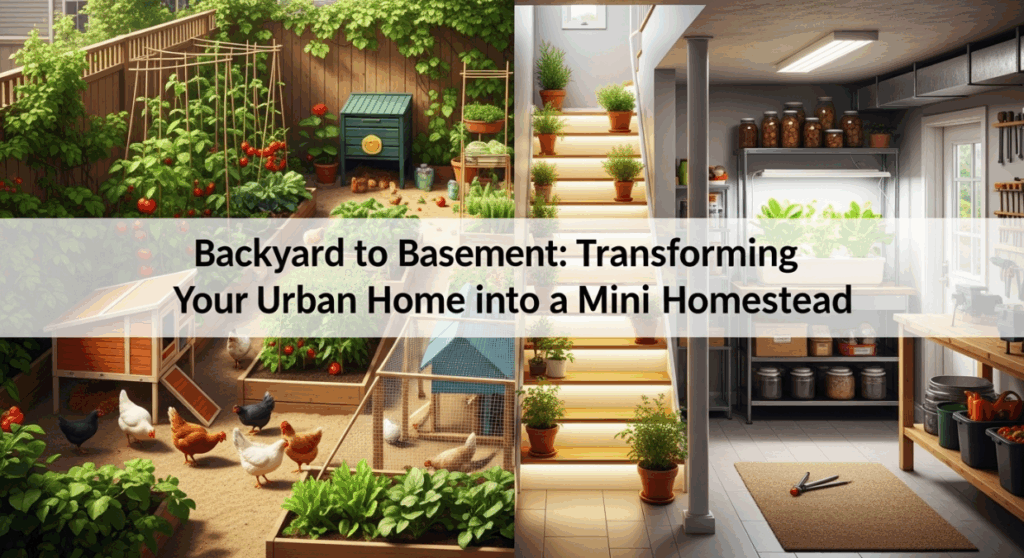
Introduction
Urban living and homesteading might seem worlds apart, but with the right mindset and smart strategies, your city home can become a self-sufficient mini homestead. Whether it’s your backyard, balcony, rooftop, or even basement, every square foot holds potential. In this guide, you’ll discover how to transform urban spaces into productive, sustainable areas that support homegrown food, energy efficiency, and DIY living all without leaving the city.
The Challenge
For most city dwellers, the biggest challenge to homesteading is space. Traditional homesteads conjure images of sprawling land, barns, and open fields not concrete patios or compact apartments. Add in building codes, zoning restrictions, and limited access to natural resources, and the idea of urban self-sufficiency can feel impossible. But with creativity, small-scale systems, and strategic planning, even the smallest urban home can begin to support a more independent lifestyle.
Why This Matters
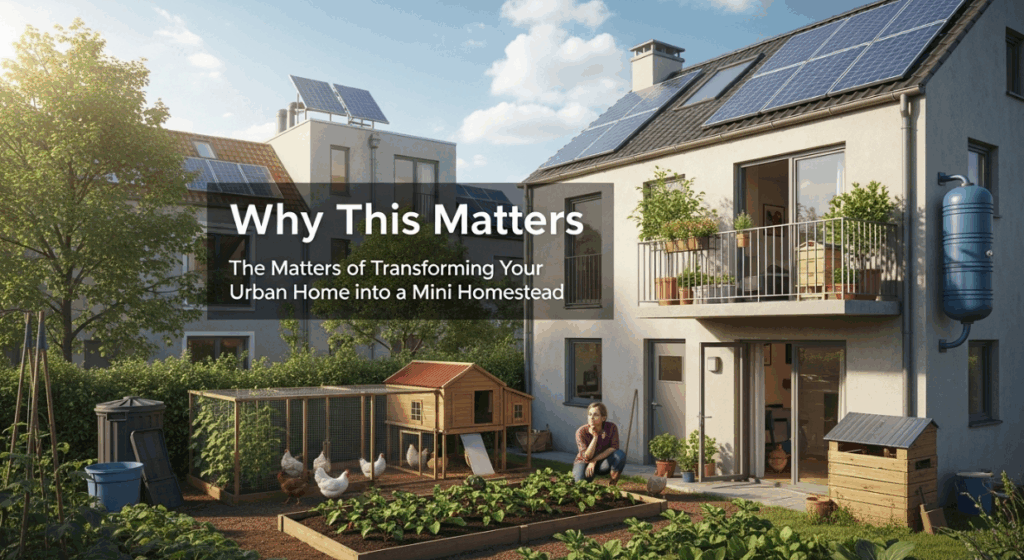
Rising grocery prices, climate concerns, and a growing desire for healthier, local food have made self-sufficiency more relevant than ever. According to a National Gardening Association report, food gardening in the U.S. has increased by 200% over the past decade, especially in urban environments. Transforming your urban home into a mini homestead doesn’t just save money it reduces environmental impact, builds resilience, and creates a deeper connection with what you eat and use every day.
Step-by-Step Guide
Let’s break down how to use each part of your home from backyard to basement for your urban homestead.
1. Maximize Backyard and Outdoor Space
Start with container gardening, raised beds, or vertical planters. Grow quick-yield crops like lettuce, tomatoes, cucumbers, herbs, and beans. Use trellises, arbors, or wall-mounted racks to take advantage of vertical space. Rain barrels can capture water for irrigation, and compost bins can turn kitchen waste into rich soil.
2. Utilize Your Basement for Storage and Preservation
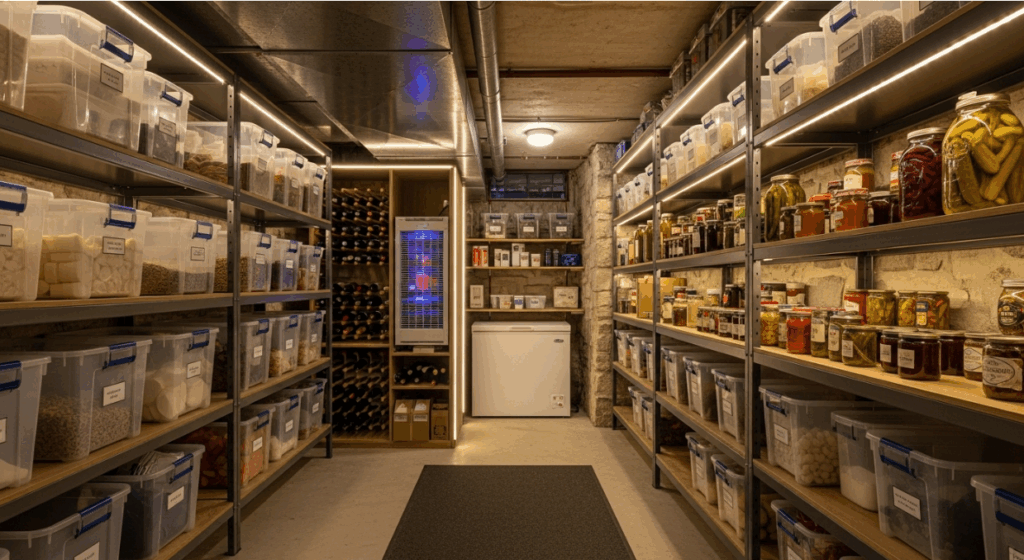
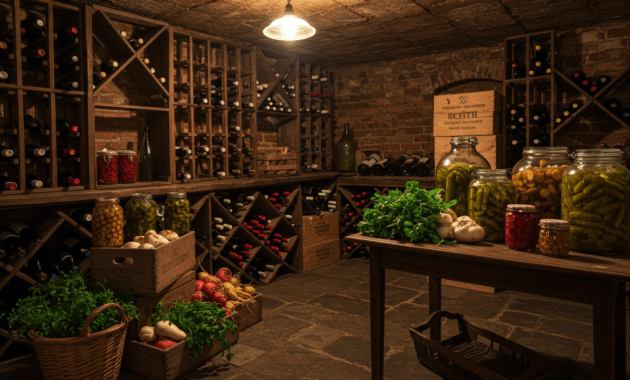
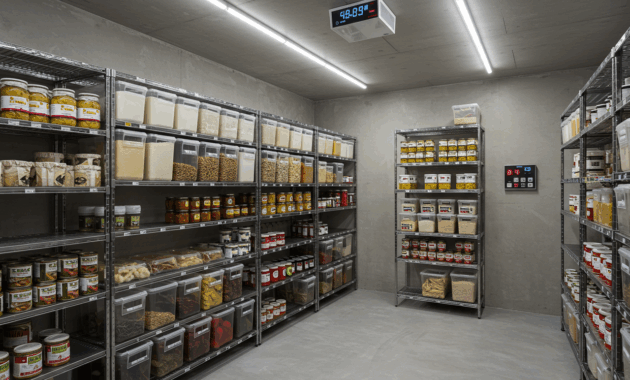
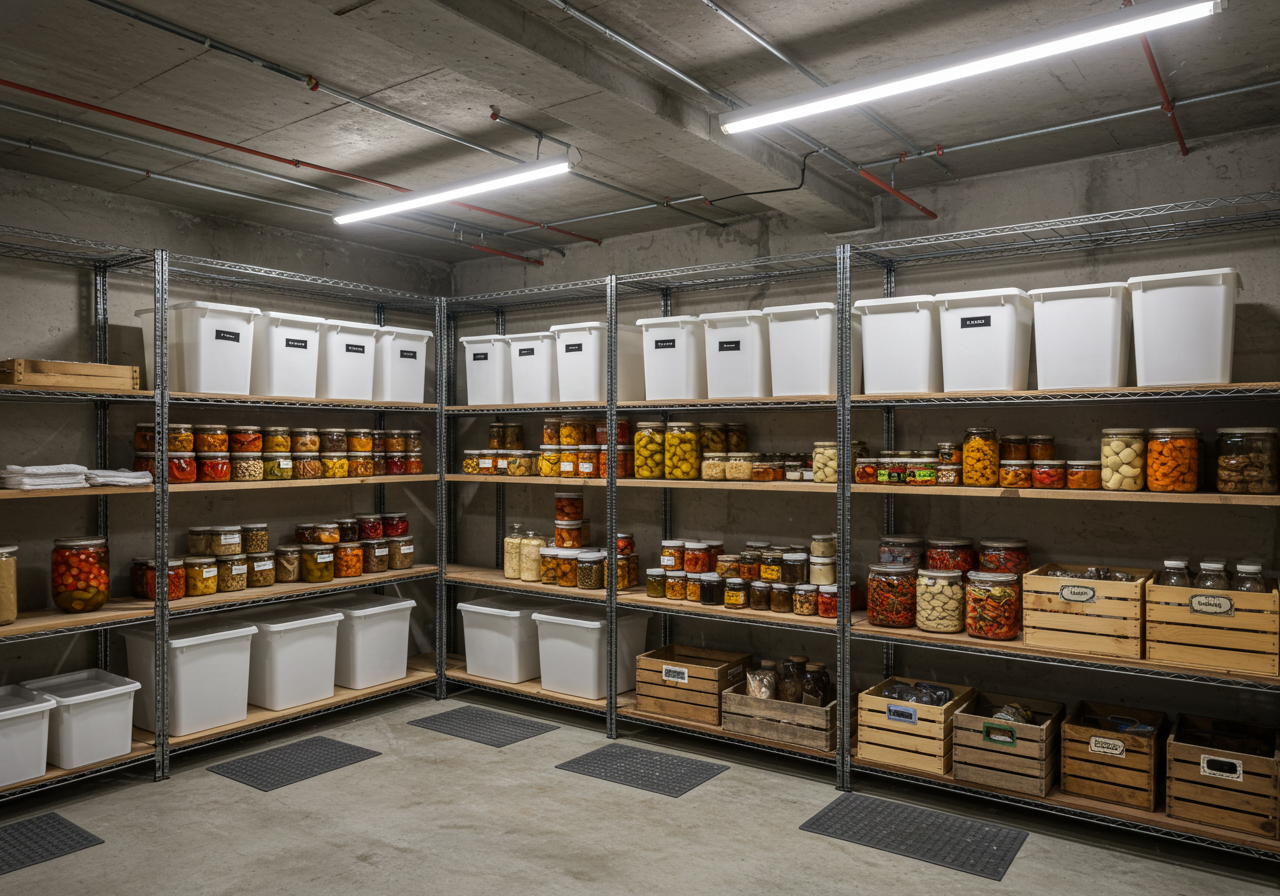
Your basement is prime real estate for a mini root cellar. Use it to store canned goods, preserved harvests, and dry pantry staples. Install shelving for fermentation projects like kimchi or sauerkraut. Consider a small freezer for extra produce, meat, or bulk buys. Keep a dehumidifier running to maintain ideal storage conditions.
3. Grow Indoors Year-Round
Don’t stop gardening in winter. Use grow lights and hydroponic systems to produce greens and herbs indoors. Shelving units with LED grow bulbs can support lettuce, microgreens, and basil in a sunless kitchen or hallway. Aquaponic setups can even support fish and greens simultaneously in one system.
4. Raise Small Livestock (If Permitted)
If local laws allow, chickens or quail can thrive in small coops and provide fresh eggs daily. Rabbits can be raised for manure, meat, or companionship. Even a worm bin under your sink can produce nutrient-rich compost while reducing waste.
5. Make Your Own Cleaning and Household Products

Homesteading goes beyond food. Try making natural cleaners from vinegar, baking soda, and citrus. Create beeswax wraps instead of plastic, or sew reusable cloth items like napkins and mop pads. DIY products reduce costs and plastic consumption while giving you full control over ingredients.
Expert Advice
Urban homesteading experts often stress the importance of starting small. Don’t attempt to overhaul your entire home at once. Focus on one area like herbs in your kitchen window or canning one batch of tomatoes. Over time, you’ll gain confidence and build a system that suits your lifestyle and local environment. Also, engage with your local extension office, gardening groups, or online forums for region-specific advice and encouragement.
Common Mistakes
New homesteaders often fall into a few avoidable traps:
- Trying to grow too much, too fast
- Neglecting to track expenses or yields
- Ignoring local laws about composting or livestock
- Skipping research on indoor light requirements
- Failing to rotate crops or amend soil regularly
Remember, the goal isn’t perfection it’s progress. Be willing to adjust your systems and learn from setbacks.
Resources & Tools

Enhance your mini homestead with these essential tools and learning hubs:
- Books: “Mini Farming” by Brett Markham, “The Backyard Homestead” by Carleen Madigan
- Apps: Planter, From Seed to Spoon, SmartPlant
- Websites: UrbanHomestead.org, GrowJourney, Mother Earth News
- Gear: LED grow lights, rainwater barrels, mason jars, indoor composters, fermenting kits
Bookmark these as go-to references to continue growing your knowledge and setup.
Actionable Summary
You don’t need acres of land to become more self-sufficient. Start in your backyard with raised beds or vertical gardens. Use your basement for preserving and storing food. Grow herbs and greens indoors, and consider DIY solutions for your household needs. Every corner of your home from rooftop to windowsill has potential to support your homesteading goals. Begin with what you have and grow from there.
Ready to turn your city home into a thriving mini homestead? Subscribe to our newsletter for weekly DIY guides, seasonal planting tips, and sustainable living inspiration. Share your progress on social media using #UrbanHomesteadLife and connect with a growing community of modern homesteaders just like you.
Explore more urban homesteading guides, tips, and success stories on our blog. Take the next step in building your self-sufficient life no matter where you live.
| Urban Homesteading Aspect | Key Tips | Tools/Resources |
|---|---|---|
| Backyard & Outdoor | Use container gardens, raised beds, vertical planters, rain barrels, and compost bins | Raised bed kits, rain barrels, compost bins |
| Basement Storage | Create root cellar, install shelves for fermentation, use freezer and dehumidifier | Shelving units, freezer, dehumidifier |
| Indoor Growing | Use LED grow lights, hydroponics, aquaponics for year-round herbs and greens | LED grow lights, hydroponic kits, aquaponic systems |
| Small Livestock | Raise chickens, quail, rabbits, or worms if permitted | Small coops, worm bins |
| DIY Household Products | Make natural cleaners, beeswax wraps, reusable cloth items | Ingredients for cleaners, sewing materials |
